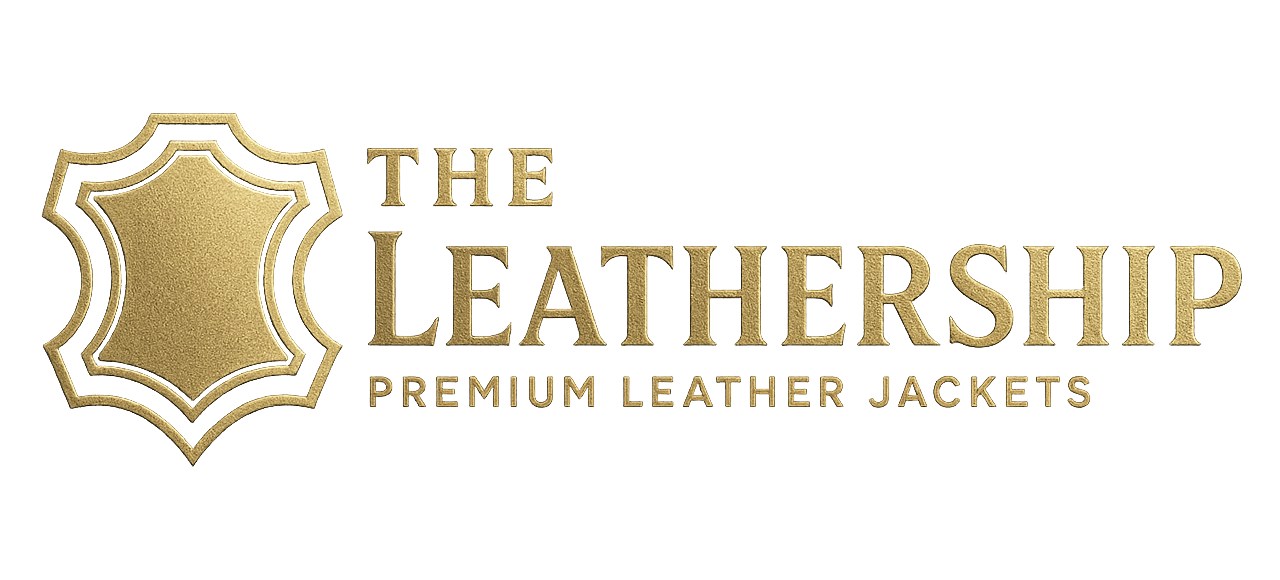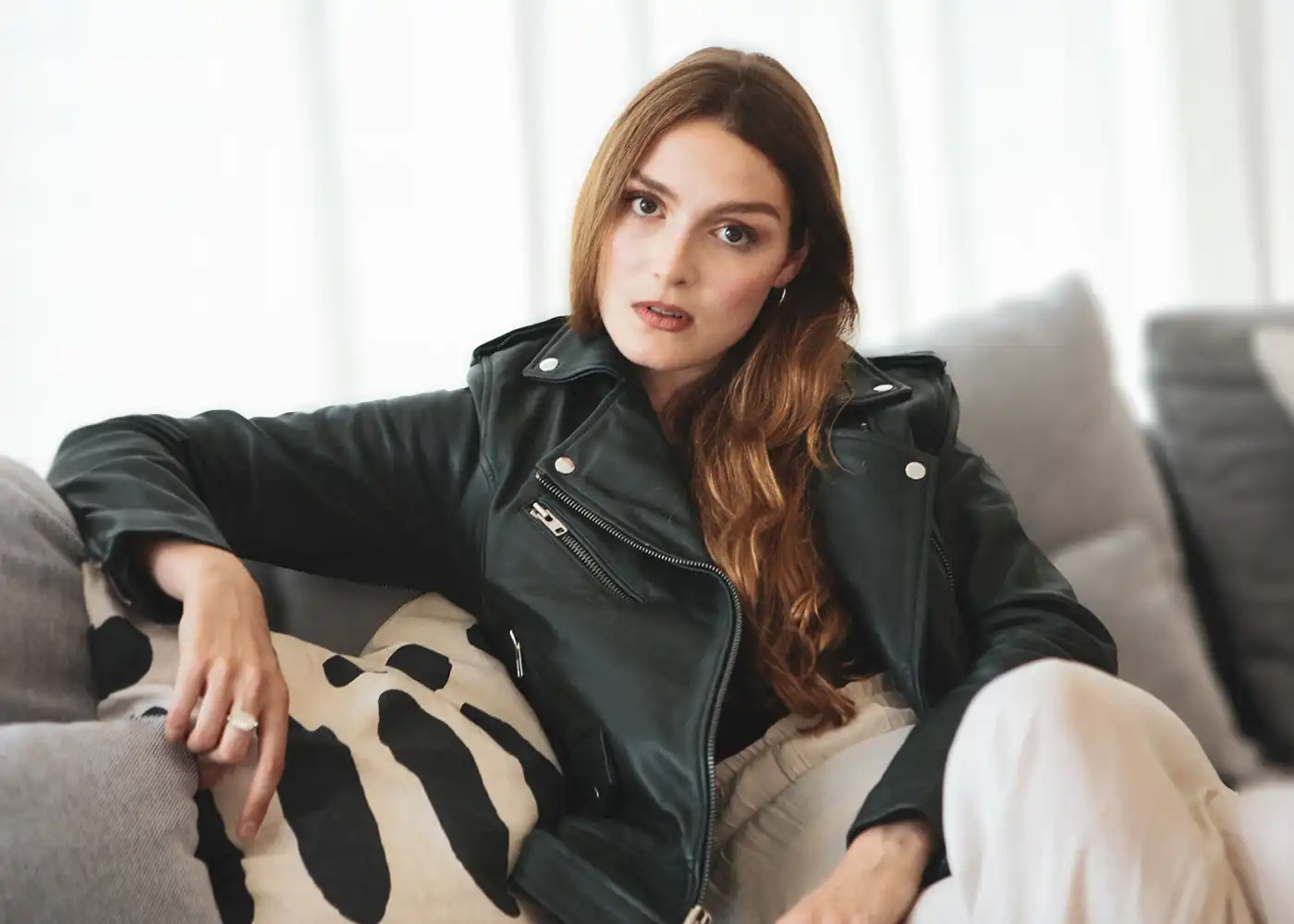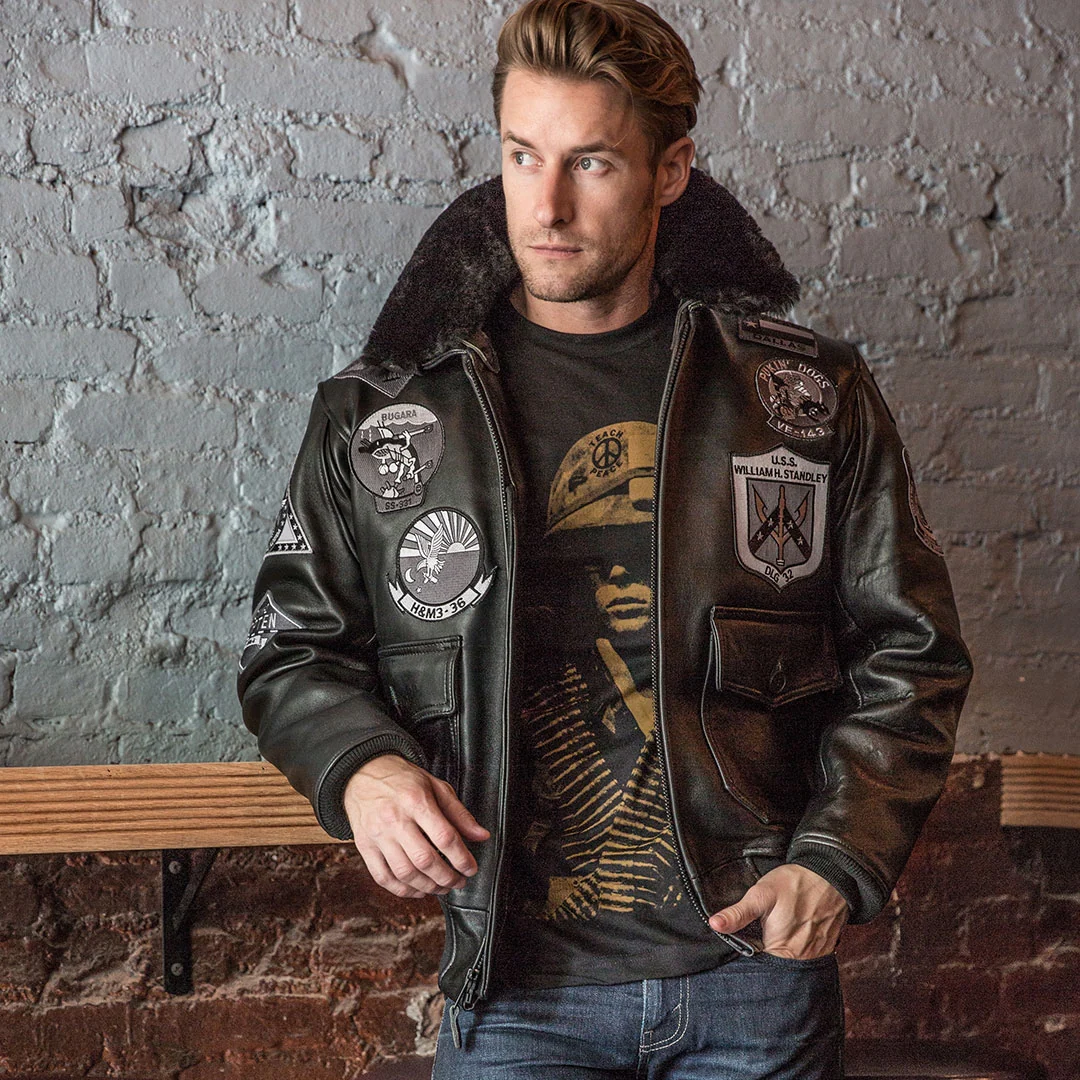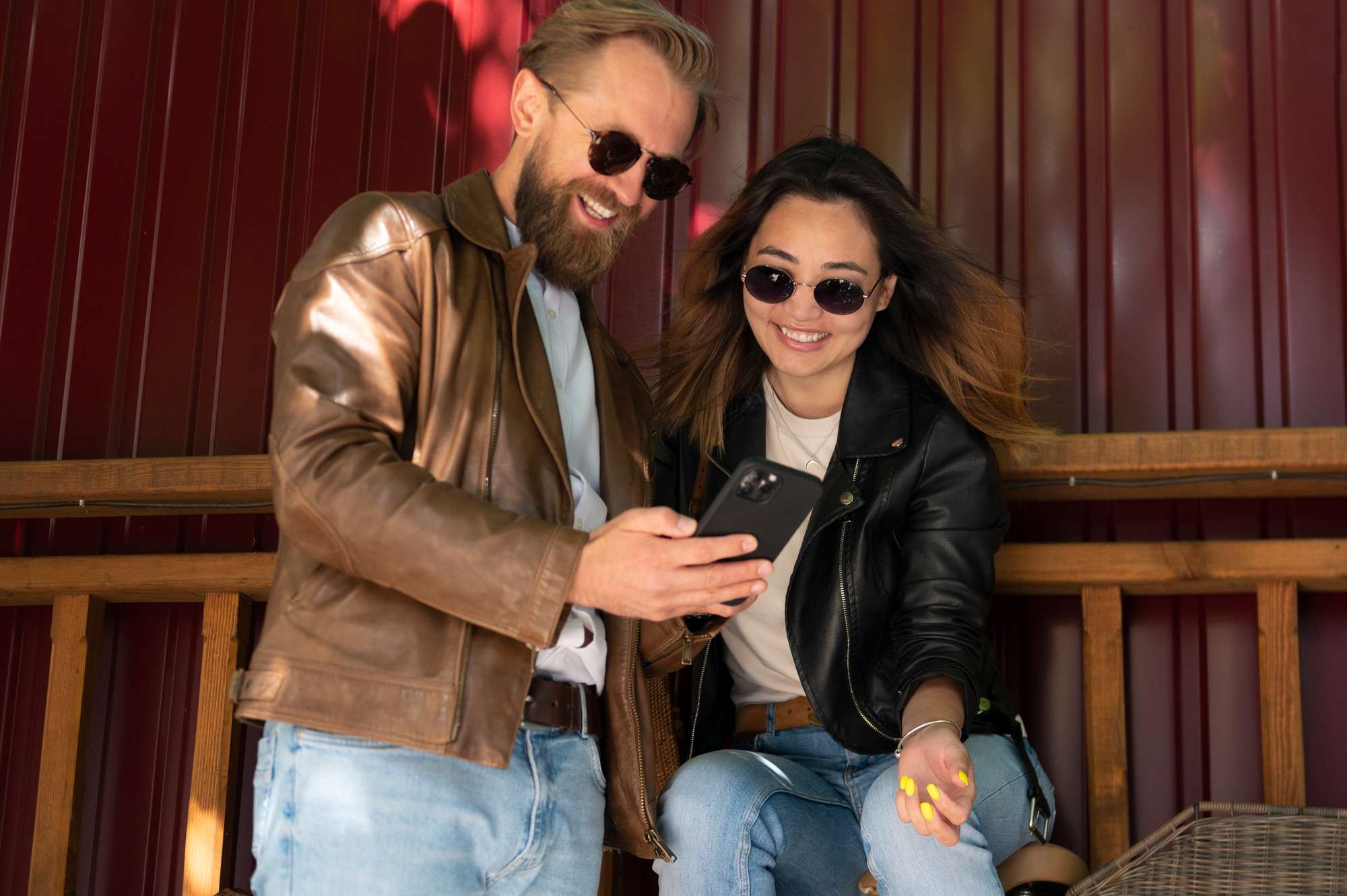Introduction to Leather Jackets
Leather jackets have transcended the boundaries of fashion to become an enduring symbol of style, rebellion, and versatility. Originating from their functional beginnings in military and aviation industries, these iconic garments have been embraced by various subcultures and fashion movements over the decades. The allure of leather jackets lies in their remarkable ability to combine practicality with a strong, fashionable statement, making them a wardrobe staple for individuals across different walks of life.
The appeal of leather jackets is multifaceted, largely due to their durability, comfort, and adaptable nature. Leather, being a natural material, provides unparalleled longevity compared to synthetic alternatives. With proper care, a well-crafted leather jacket can last for decades, often improving in appearance and comfort with age. This inherent resilience underscores their timelessness, making leather jackets an investment piece that transcends ephemeral fashion trends.
Culturally, leather jackets have made significant impressions across various societies. In American culture, they became symbols of rebellion through associations with bikers and rock stars in the mid-20th century. The leather jacket is imbued with an air of rugged masculinity and defiance, thanks in part to icons like James Dean and Marlon Brando. On the other hand, in subcultures across Europe, they were adopted by punk rockers as a canvas for personal expression, often adorned with pins, patches, and artwork.
Beyond subculture affiliations, leather jackets have found their way into mainstream fashion. High-end designers have reinterpreted this classic garment, incorporating it into upscale collections while retaining its edgy essence. The leather jacket’s versatility allows it to smoothly transition from casual daywear to a statement piece in evening ensembles, adapting to various personal styles and occasions.
In essence, the leather jacket is more than just a piece of clothing; it is imbued with historical significance, cultural importance, and a mark of personal identity. As we traverse the history, styles, and care tips of leather jackets, one thing remains clear: their enduring popularity is a testament to their inherent qualities and cultural resonance.
A Brief History of Leather Jackets
The history of leather jackets is deeply rooted in early aviator and military apparel, where functionality and durability were paramount. These jackets initially emerged in the early 20th century as part of the standard issue for military pilots during World War I. Crafted primarily for their practicality, they provided protection against harsh weather conditions at high altitudes. This practical use continued into World War II, solidifying leather jackets as an essential aspect of military gear.
The leather jacket transitioned from military attire to a symbol of rebellion in the 1950s and 1960s, thanks to its adoption by the biker subculture. It was during this period that the leather jacket evolved into a powerful statement of nonconformity and rugged individualism. The iconic imagery of bikers clad in leather jackets, symbolizing freedom and defiance, was popularized by the edgy allure of motorcycle clubs.
Pop culture further cemented the leather jacket’s place in fashion history, largely due to iconic figures such as James Dean and Marlon Brando. Dean’s portrayal in “Rebel Without a Cause” and Brando’s role in “The Wild One” immortalized the leather jacket as an emblem of youthful rebellion and cool detachment. These cultural milestones brought the leather jacket from niche subcultures to the forefront of mainstream fashion.
As fashion evolved, so did the leather jacket. In the later decades, it transcended its rebellious roots, becoming a versatile wardrobe staple. Its adaptability allowed it to be redesigned by fashion houses and incorporated into high fashion collections. From punk rockers to haute couture, the leather jacket became a ubiquitous item that symbolized both edge and elegance.
In conclusion, the enduring appeal of leather jackets lies in their rich history and ability to seamlessly blend practicality with rebellious style. From early aviators and military personnel to cultural icons and modern fashionistas, leather jackets continue to be a timeless fashion statement, revered for their storied past and versatile allure.
Different Types of Leather Used in Jackets
Leather jackets come in various styles, largely defined by the type of leather used in their construction. Each type of leather has distinct characteristics that affect the jacket’s appearance, texture, and overall durability.
Cowhide is perhaps the most traditional and commonly used leather for jackets. Known for its thick, durable nature, cowhide leather is highly resistant to wear and abrasion. This robustness makes cowhide jackets ideal for rough use and colder climates. Over time, cowhide leather tends to develop a unique patina, enriching the jacket’s vintage appeal.
Lambskin leather, on the other hand, is revered for its softness and luxurious feel. Being much lighter than cowhide, lambskin jackets offer a high degree of comfort and flexibility. This type of leather is typically used for high-fashion jackets that require a sleek, refined look. However, lambskin is more delicate and requires careful maintenance to prevent damage.
Goatskin leather provides a middle ground between cowhide and lambskin. It is known for its softness and yet retains a degree of toughness. Goatskin is naturally water-resistant due to the presence of lanolin, which makes it a practical choice for a durable and supple jacket. The grainy texture of goatskin gives it a distinct appearance that is often favored for its rugged charm.
Suede, which is created from the underside of the animal hide, offers a completely different aesthetic and feel. Suede jackets are highly prized for their plush texture and smooth finish. However, suede is less durable and more susceptible to stains and water damage, necessitating special care and maintenance.
The choice of leather directly influences the jacket’s look and feel. A cowhide jacket offers a rugged, robust vibe, while lambskin presents a soft, fashionable appearance. Goatskin blends durability with comfort, and suede provides a luxurious, tactile experience. Understanding these differences helps in selecting the perfect leather jacket to match your style and needs.
Popular Styles of Leather Jackets
Leather jackets are a timeless fashion staple, offering a blend of durability and style. Among the plethora of designs, four styles stand out: the biker jacket, the bomber jacket, the racer jacket, and the leather blazer. Each style addresses different fashion preferences and occasions, featuring distinct characteristics that make them unique.
The biker jacket, also known as the moto jacket, is an iconic symbol of rebellion and ruggedness. Typically crafted from high-quality leather, its standout features include asymmetrical zippers, multiple pockets, and wide lapels. The style traces its roots to motorcycle culture, and its design caters to those looking for both function and edge. The diagonal zippers are more than just stylish; they provide wind protection, making the biker jacket practical for riding.
The bomber jacket, with its origins in military aviation, offers a more casual and relaxed look. Characterized by a front zipper, ribbed cuffs and hems, and a more minimalistic design compared to the biker jacket, bombers often come with a combination of leather and wool or nylon. This versatility makes them suitable for various settings, from casual outings to semi-formal gatherings. Their simple yet elegant style has made them a favorite across generations.
The racer jacket is another leather classic, embodying sleek, streamlined sophistication. It typically features a front zipper and a banded collar, providing a modern, minimalist aesthetic. As the name suggests, the racer jacket’s origins are in racing, where simplicity and ease of movement were essential. Today, it appeals to those who appreciate a clean, no-nonsense design that effortlessly integrates into both casual and dressy wardrobes.
Lastly, the leather blazer infuses traditional blazer sophistication with contemporary flair. Unlike the ruggedness of other leather jackets, blazers offer a polished look with structured shoulders and button closures. Perfect for formal settings or a refined casual look, leather blazers bridge the gap between professional and stylish, making them a versatile wardrobe addition.
Each of these leather jacket styles brings unique features and benefits, catering to diverse fashion sensibilities and occasions. Whether you prefer the edgy biker look, the relaxed vibe of a bomber, the sleek racer style, or the sophisticated leather blazer, there is a leather jacket to match your taste and needs.
Choosing the right leather jacket involves a thoughtful process, considering several essential factors such as fit, style, and personal preference. To begin with, it is crucial to take accurate measurements. Use a cloth measuring tape to measure your chest, waist, shoulders, and arms. Ensure that you measure over a shirt you might typically wear under the jacket for an optimal fit. This careful measurement ensures that the leather jacket you select will provide both comfort and style.
Quality of Leather
Assessing the quality of leather is another vital step in selecting your perfect jacket. Leather types vary, with full-grain, top-grain, and genuine leather being the most common classifications. Full-grain leather is the highest quality and most durable but also typically the most expensive. Top-grain leather offers a balance between quality and cost, whereas genuine leather, despite its name, is of the lowest quality among the three. Look for jackets made from full-grain or top-grain leather to ensure longevity and a premium look.
Style and Fit
When it comes to style, consider what best complements your body shape and personal taste. Classic styles, such as the biker jacket, bomber jacket, or a simple leather blazer, each bring their distinct flair. Slim-fit jackets often enhance a more modern appearance, whereas relaxed fits offer comfort and a classic feel. Trying on several styles can help determine which one aligns best with your preferences and body type. Pay attention to how the jacket fits across the shoulders and chest, as these areas are critical for overall comfort.
Color Selection
Color is also a pivotal factor when choosing a leather jacket. Black and brown are timeless choices, easily integrating into most wardrobes. However, don’t shy away from experimenting with other colors like navy or burgundy if they complement your existing outfits. The goal is to select a color that not only suits your style preferences but also enhances the versatility of your wardrobe.
Try Before You Buy
Lastly, always try on the leather jacket before making a purchase. Ensure that it allows for ease of movement and feels comfortable in your typical range of motions. The tactile experience of wearing the jacket provides insight that no online description can convey, solidifying your decision with confidence.
Caring for Your Leather Jacket
Proper maintenance is paramount to ensuring the longevity of your leather jacket. Leather, being a natural material, necessitates meticulous attention to retain its texture and appearance. Cleaning your leather jacket requires a few essential steps. Initially, it is advisable to remove any surface dust using a soft cloth or a gentle brush. For stains or marks, use a damp cloth with mild soap. Avoid soaking the leather as excess water can cause damage. Allow the jacket to air dry naturally—never use a heat source.
In addition to cleaning, conditioning the leather is crucial. Leather can dry out over time, leading to cracks and a deteriorated look. To prevent this, invest in a high-quality leather conditioner. Apply the conditioner sparingly using a soft cloth, ensuring even distribution across the surface. Be sure to follow the product’s instructions, as over-conditioning can also be detrimental.
Proper storage of your leather jacket is equally important. Store the jacket in a cool, dry place, away from direct sunlight, which can cause fading. Utilize a padded hanger to help maintain the jacket’s shape. If you plan to store the jacket for an extended period, consider using a breathable fabric garment bag rather than plastic, which can trap moisture and lead to mildew.
There are several do’s and don’ts when it comes to leather jacket care. Do regularly wipe the jacket to keep it clean and free of dust. Do condition it periodically to keep the leather supple. Don’t use harsh chemicals or cleaning agents, as these can cause discoloration and damage. Don’t expose the jacket to prolonged moisture or heat, as these elements can cause warping and cracking.
By adhering to these care tips, you ensure that your leather jacket remains a timeless, durable piece in your wardrobe. Proper cleaning, conditioning, and storage will preserve its look and feel, allowing you to enjoy your investment for many years to come.
Styling Tips: How to Wear a Leather Jacket
Incorporating a leather jacket into your wardrobe can seamlessly elevate your fashion game, regardless of the occasion. Understanding how to pair a leather jacket with different outfits is essential to making a versatile statement. Here’s a guide to master the art of styling a leather jacket for casual, business casual, and formal attire.
For a casual look, pairing a leather jacket with classic denim jeans and a plain or graphic T-shirt is timeless. This combination exudes an effortlessly cool vibe perfect for weekend outings or relaxed social gatherings. Sneakers or casual boots complement this ensemble, offering a balanced yet stylish appearance. Adding accessories like a simple wristwatch or a cap can further enhance the laid-back aesthetic.
When aiming for a business casual look, a leather jacket can effortlessly replace the traditional blazer. Opt for a sleek, well-fitted jacket and pair it with slacks or chinos and a crisp button-down shirt. Neutral tones like black, brown, or navy work best in maintaining a professional aura. Leather loafers or derby shoes complete the look, providing a sophisticated touch suitable for semi-formal settings. Accessories such as a quality leather belt and a minimalist briefcase can accentuate the business casual ensemble.
Elevating a leather jacket for formal occasions can be challenging yet achievable with the right approach. Choose a tailored leather jacket with minimal embellishments and pair it with a dress shirt, tailored trousers, and dress shoes. A monochromatic or dark-toned outfit can underscore the jacket’s elegance. Luxury accessories like a silk tie, pocket square, or cufflinks can further refine your attire, ensuring you stand out in any formal event.
Seasonal styling of leather jackets can transform your look throughout the year. In spring and autumn, layer the jacket over a lightweight knit or a long-sleeve shirt for added warmth without compromising style. During summer, opt for perforated leather jackets with breathable fabrics underneath. In winter, layering becomes vital; a leather jacket over a chunky sweater or turtleneck, combined with scarves and gloves, ensures both warmth and fashion. Accessorizing with seasonal items such as sunglasses in summer or beanies in winter can complete the look.
By incorporating these styling tips, you can confidently wear a leather jacket across various occasions and seasons, enhancing your overall fashion repertoire.
The Future of Leather Jackets: Trends and Sustainability
The fashion landscape constantly evolves, and leather jackets remain at its forefront. As consumers become more conscious of their environmental footprint, the industry has responded with innovative trends and sustainable practices. A notable shift is seen in the adoption of ethical leather options. Vegetable-tanned leather, for instance, is gaining popularity for its biodegradable properties and relatively eco-friendly tanning process. Unlike traditional tanning methods that rely heavily on harmful chemicals, vegetable tanning uses natural tannins derived from plant-based sources, significantly reducing environmental impact.
Moreover, faux leather, also known as vegan leather, has made remarkable strides in quality and appeal. Modern faux leather not only mimics the look and feel of genuine leather but also offers an animal-free alternative, resonating with an ethically aware demographic. Materials such as polyurethane and even more innovative eco-friendly alternatives like mushroom mycelium and pineapple leaf fibers are being utilized by designers who are committed to sustainability.
Several emerging designers and established brands are pioneering these eco-friendly developments. Brands like Stella McCartney have long championed cruelty-free fashion, incorporating high-quality vegan leather into their collections. Meanwhile, new entrants like Beyond Skin are pushing the boundaries of what synthetic leather can achieve, providing fashionable yet responsible choices for consumers.
The emphasis on sustainability is not just limited to the materials used but extends to the entire lifecycle of the leather jacket. This encompasses practices like reducing waste in production, implementing recycling programs, and encouraging consumers to invest in timeless, durable pieces that transcend fleeting fashion trends. By focusing on quality over quantity, the industry aims to reduce the frequency of replacement, thus minimizing environmental impact.
As we look to the future, it is clear that the intersection of style and sustainability will define the trajectory of leather jackets. By embracing ethical leather options, fostering innovative materials, and promoting conscientious consumption, the fashion industry is poised to offer leather jackets that not only look good but also do good for the planet.




